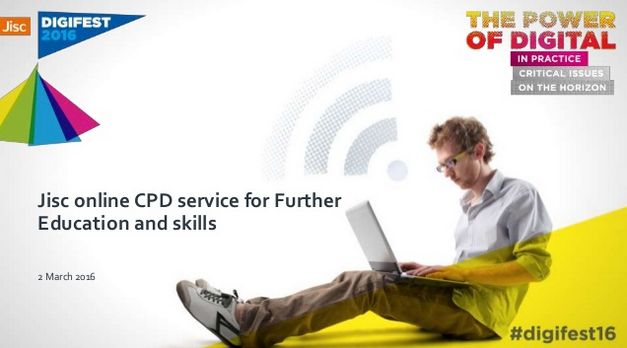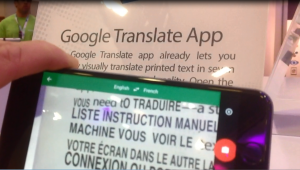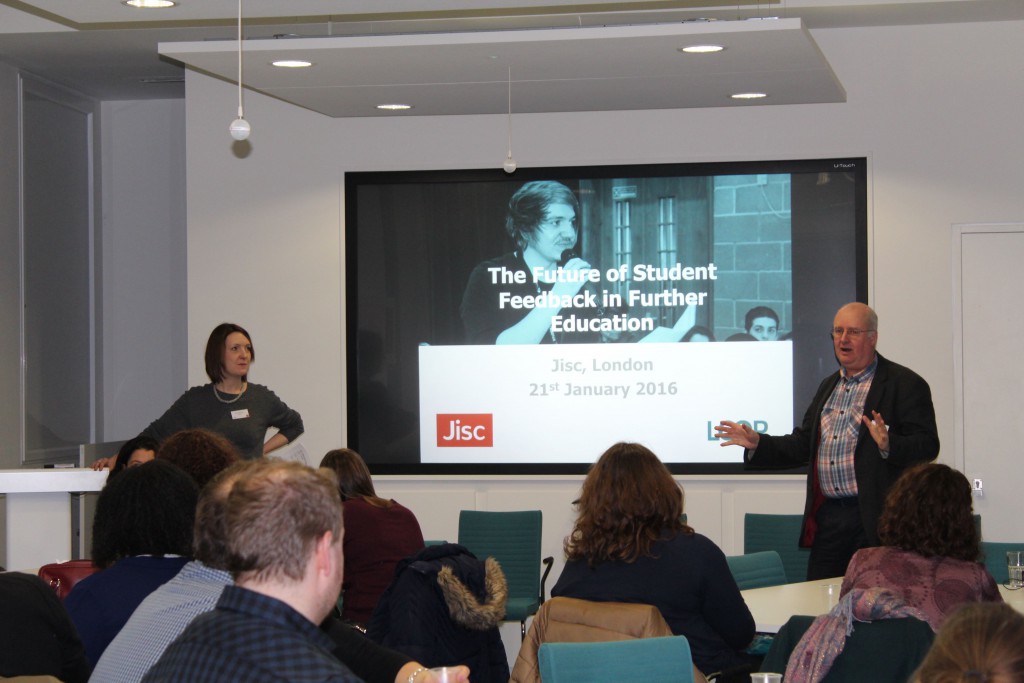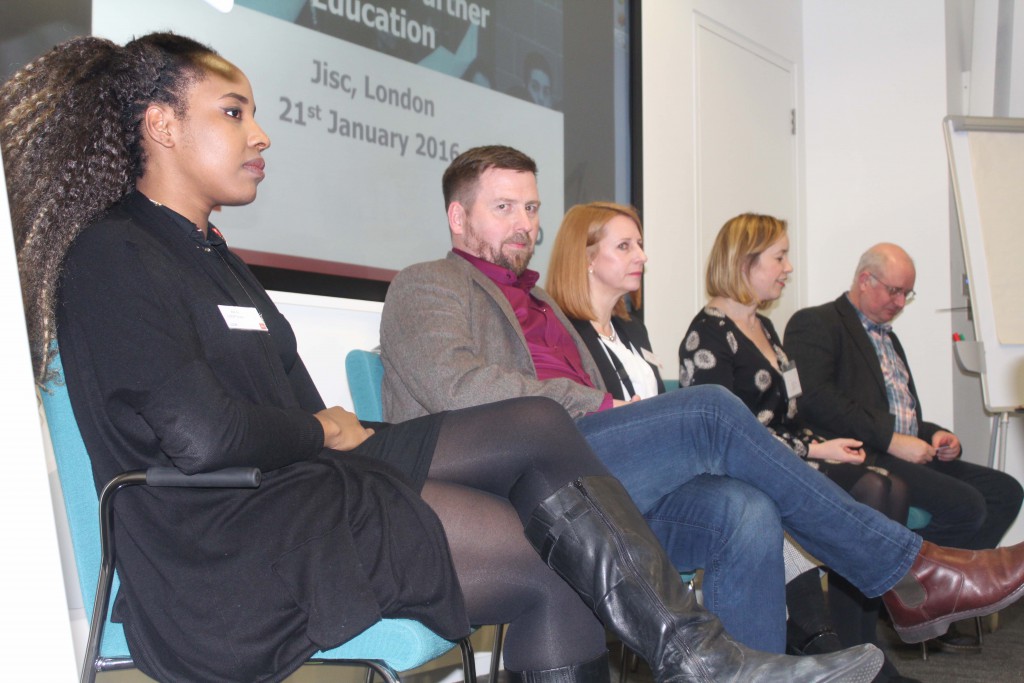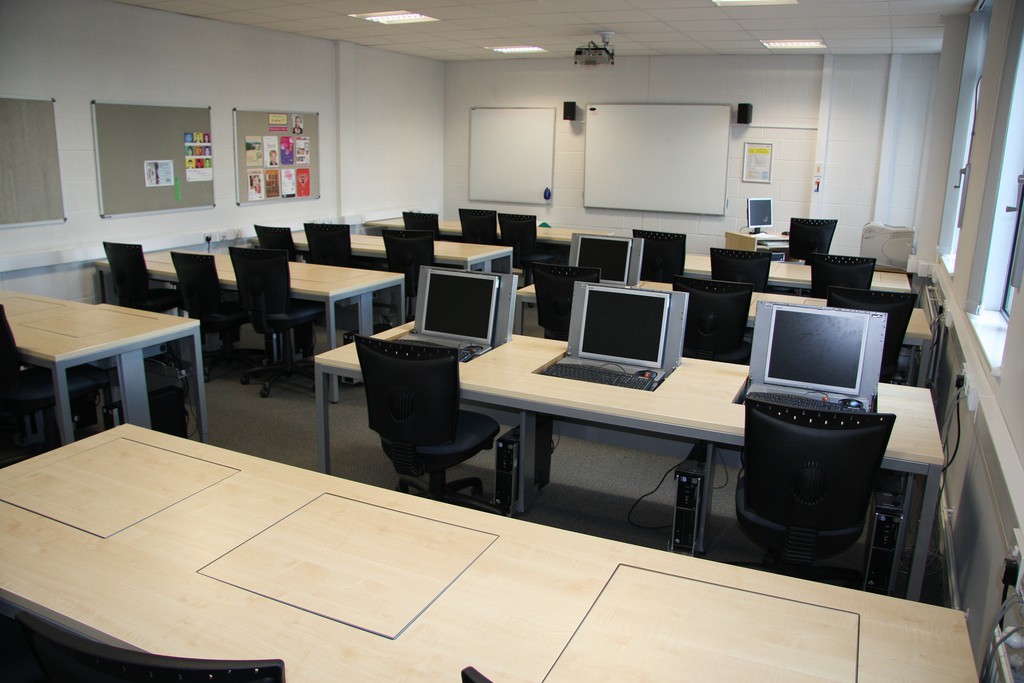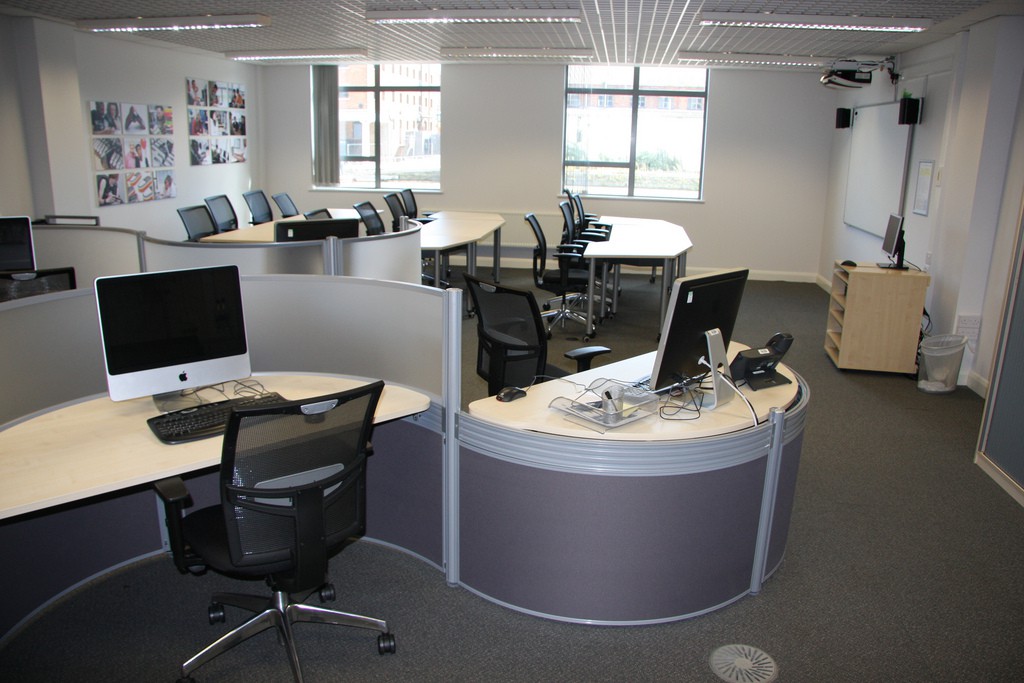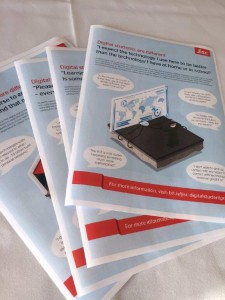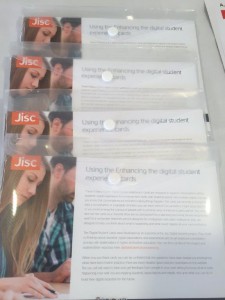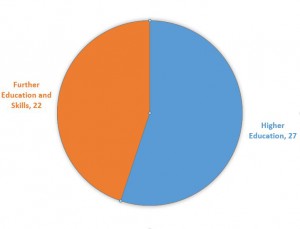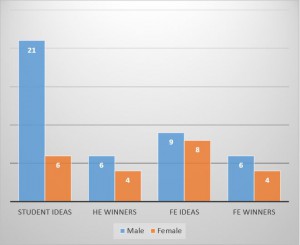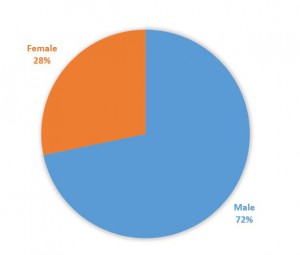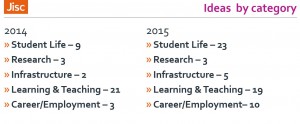On 2 and 3 March, Jisc held yet another highly innovative and engaging Digifest event. I felt a great buzz and hive of activity throughout the two days, encapsulated by enriching presentations and content, but not forgetting the robots!
My role this year was to be on-hand to provide social media coverage for sessions throughout the event.
One of the highlights was the session improving digital technology skills in FE: The CPD service, held at the advice and practical assistance stand, which took place at 11:15am on the first day. The session highlighted the students’ expectations regarding digital technology and some of the barriers that teaching staff face. Sarah Dunne, senior so-design manager, Jisc talked about FELTAG and some of the challenges moving to a blended learning model. This led into some audience feedback and their experiences and challenges related to CPD and developing digital capabilities and the kind of questions raised below:
How can trainers and teachers gain the confidence and skills needed to use digital technology effectively?
What were the most troubling aspects that came back regularly?
Sarah then introduced the Jisc online CPD service for FE and skills, a project that once published will enable staff to build their skills and make them more confident and proficient in using digital technology, directly mapped to the needs of the FELTAG agenda.
“The JIsc CPD online service will provide ease of access to curated content through orchestrated activities to help staff use them in their own teaching”
The tool has been designed with a simple interface that will lead the user along pathways to ‘learn, find and reuse and build’ – the CPD service will tie in to a diagnostic ‘Discovery’ tool, which is linked to Jisc’s six elements of digital capability. Feedback and suggested steps and actions are provided during the course of the user experience and also self-review.
In addition the tool will offer searching of curated resources, community reviews and digital capability themes. There is also potential for development of an online course builder in the future.
For further information about this exciting project, please contact Sarah Dunne (https://www.jisc.ac.uk/staff/sarah-dunne)
sarah.dunne@jisc.ac.uk
Clare Killen, who is a consultant for the CPD project demonstrated many scenarios related to the kind of challenges that teachers may face and how the Jisc CPD online tool will help in the future. Peter Chatterton, also a consultant for the project led the discussion activities the workshop, the outcomes of which have been gathered to inform future development.
(Clare Killen on Twitter: https://twitter.com/clarejk)
(Peter Chatterton on Twitter: https://twitter.com/balham)
The Jisc online CPD service aims to launch this September.
Feedback from delegates during the session
“Will be a great support to those of us in training. Identifying needs means we can target specifics and plan suitable training opportunities.” – Teresa Woolf, Learning Technology Developer, Swindon College
Further reading
Jisc guide: Supporting professional development: https://www.jisc.ac.uk/guides/curriculum-design-and-support-for-online-learning/professional-development
Flipping continuing professional development: https://www.jisc.ac.uk/news/flipping-continuing-professional-development-20-aug-2015
Implementing the FELTAG agenda: https://www.jisc.ac.uk/rd/projects/implementing-the-feltag-agenda
Throughout the rest of Digifest I was busy tweeting from sessions and contributing to the conversations on the app, which I found to be a great engaging tool. One of the benefits of the app was its ability to sync to Twitter, Facebook and LinkedIn to extend the messages without having to separately visit other social media websites.
Digilab
Digilab was very immersive and featured some very cool robots and digital technology.
Delegates could try out virtual reality headsets and use their smart device to control a replica toy BB-8 droid from the Star Wars: The Force Awakens movie.
Other interesting things to see included: thermal imaging, 3D printing, lecture capture, 3D photos and Google Translate.
To have a look at these technologies in more details visit the Digilab webpages. (https://www.jisc.ac.uk/events/jisc-digital-festival-02-mar-2016/digilab)
But what did the delegates think about Digifest? Why not listen to some of the reflections from speakers and delegates captured for Jisc’s YouTube channel. (https://www.youtube.com/playlist?list=PLbKeiLya4JyAqU7ZEGfvy5PAcAqXy3DKB)


